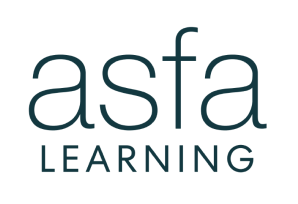12 May 2015
ASFA’s response to the 2015-16 Federal Budget
The Association of Superannuation Funds of Australia (ASFA) says the community will be happy to see that the government has kept its promise to not make any unexpected, detrimental changes to the superannuation in this Parliamentary term.
Measures, such as making it easier for members to be reunited with their lost and unclaimed super, and changes to child care rebates to make it easier for women to return to work, will also provide a significant boost to the retirement savings of hundreds of thousands of people in the community.
This statement provides detailed commentary on five key areas:
- Child care reforms a win for womens’ superannuation
- Age Pension changes highlight the importance of saving more super
- Helping reunite people with lost super a big boost for the community
- Tax cuts for small business should enable the self-employed to boost their retirement savings
- The increase to levies raised from superannuation funds should be matched by greater transparency and accountability from government agencies
All comments are attributable to ASFA CEO Ms Pauline Vamos.
For comment on additional areas, please contact ASFA on 0451 949 300.
1. Child care reforms a win for womens’ superannuation
Reforms to childcare payments will enable hundreds of thousands of women to return to the workforce, delivering a much needed boost to their superannuation accounts, and helping to close the $92,000 gender gap when it comes to final retirement savings.
“At present, women retire on about half as much superannuation as men, and one-in-three have no super at all. We know that this is largely due to the time they spend out of the workforce looking after kids at home, or the fact they end up working part-time due to the cost of childcare.
“This measure will help boost the superannuation savings of thousands of women, by making it easier for them to make the choice to return to paid work earlier and therefore contributing to super for a longer period of time.
“While this is an important first step, we would also encourage the government to consider other policies that help boost women’s super savings, such as scrapping the $450 a month wages threshold for Superannuation Guarantee (SG) payments and changing the Sex Discrimination Act to allow employers to pay their female employees more super.
“Importantly, we would particularly like to see SG payments added to the existing government-provided Paid Parental Leave (PPL). We estimate this would provide a 30-year-old person with a $7,000 boost to their final super savings, while only costing the government around $1,100 per PPL participant.”
2. Age Pension changes highlight the importance of saving more super
Changes to Age Pension eligibility highlight the importance of saving more super, to ensure people have adequate income to fund their post-work years.
“Faced with growing public debt, governments need to make tough decisions about how they will support the next generation of retirees to fund their post-work years. In most cases, people will need to put away more private savings, including in their super, to ensure they have enough money to accommodate their spending needs.
“While people may have different expectations of what they will need to spend to live a comfortable retirement, the ASFA Retirement Standard sets a benchmark for the minimum amount required. Under the current Age Pension assets test framework, ASFA estimates that a couple would need a joint superannuation balance of around $510,000 to achieve a comfortable retirement.
“Increasing the taper rate for part-pensioners from $1.50 to $3.00 per $1,000 of assets, while also increasing the threshold at which the asset test starts to apply, would require a couple to save around $120,000 more for a comfortable retirement, requiring a super balance of $630,000.
“This assumes they drawdown entirely on their capital, and receive a part-pension as their assets decrease. Given that the purpose of superannuation is to provide an income in retirement, it is reasonable to expect people to draw on their capital until their savings are exhausted, and not just rely on income generated from their account’s earnings.
“The Age Pension and superannuation systems are strongly linked, meaning adjustments to one will impact the other. This is why we support a holistic review of the retirement income system, in order to ensure it delivers the best outcomes for Australia’s growing number of retirees.”
3. Helping reunite people with lost super a big boost for the community
Cutting red tape to enable superannuation funds to help reunite members with their lost or unclaimed superannuation money will also provide a boost to a large portion of the community.
“It is estimated that there is around $6 billion in lost and unclaimed super accounts. This means there are many people out there who have hundreds, or even thousands of dollars lying in superannuation accounts that they no longer use, or that have been reported and transferred to the Australian Tax Office (ATO) as unclaimed. Frequently such people find it too hard to consolidate, or in some cases, they may not even be aware they have unclaimed super.
“Cutting red tape and streamlining the process for funds and the ATO to reunite members with their lost or unclaimed super will help boost the retirement savings of millions of fund members.”
4. Tax cut for small business should enable the self-employed to boost their retirement savings
Significant tax cuts announced for small business should enable many self-employed Australians to contribute more to their superannuation. They build on the substantial work that has already taken place.
“The average self-employed Australian has around $120,000 at the time of retirement in their superannuation account, compared with the an average balance at retirement of $180,000 for wage and salary earners. Over 250,000 self-employed people have no superannuation at all. This may mean they end up drastically short of the savings they need to live a comfortable retirement. This is particularly true for self-employed people who have a business that they may not be able to sell as they are nearing retirement, where its only real asset is the tools of their trade.
“The tax relief provided by the government to small businesses will hopefully give them the opportunity to contribute at least a little more to their superannuation, and put them on the path to financial security in retirement.”
5. Increase to superannuation levies should be matched by greater transparency and accountability from agencies
Increases to superannuation industry levies that are proposed should be matched by greater transparency and accountability from all agencies involved in their expenditure.
“APRA-regulated superannuation funds have faced increased levies over the past few years, in particular for costs related to the implementation of the SuperStream reforms. In return, there has been little accountability or transparency from these agencies in regards to how this money is being spent. We believe providing greater detail to funds would result in a better allocation of these resources.
“In addition, we would like to see greater consideration given to the equity of the current levy arrangements, to ensure that all participants in the superannuation system pay their fair share.”
For further information, please contact:
Lisa Chikarovski: Manager – Consumer Strategy, Media and Public Affairs, 0451 949 300.
About ASFA
ASFA is the peak policy, research and advocacy body for Australia’s superannuation industry. It is a not-for-profit, sector-neutral, and non-party political national organisation, which aims to advance effective retirement outcomes for members of funds through research, advocacy and the development of policy and industry best practice.


